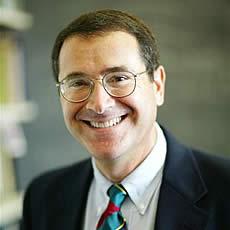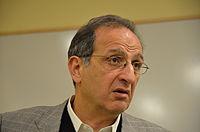The Ukrainian prison massacre: more than a footnote to history
Two American academics who lost relatives in the liquidation of Western Ukrainian political prisoners in World War II have compiled the first exhaustive account of this little-known Soviet killing spree. What happened? As the Germans advanced into the Ukraine, thousands of prisoners were systematically mutilated and executed by the Soviet NKVD to ensure they would be not fraternize with the Wehrmacht.
Reading this new book, The Great West Ukrainian Prison Massacre of 1941, is a chilling experience, to say the least.
Alexander Motyl of Rutgers University-Newark and Ksenya Kiebuzinski, an American Slavic specialist and librarian at the University of Toronto, bring the killings into a present-day context by writing that they hope their book will dissuade scholars from ignoring, minimizing or instrumentalizing the massacre. Further research, they believe, might enable us to learn just who some of these (killers) were and what they went on to do.
Are any of these criminals still alive, they wonder, in North or South America, in Western or Eastern Europe, Israel, or the countries of the post-Soviet space?
I asked Kiebuzinski if she held out hope of finding any of them. It is important to discover the identities of the NKVD agents and collaborators, she replied by email, but Im not interested in settling any scores. I do know, though, that many of them lived until old age, some not far from where the massacres took place.
In my interview with Motyl (below) he expressed his frustration.Tracking them down he said, would be a worthy project, but not for me. I'm already far too consumed by this issue...
The authors decided to document these events after they discovered that they both lost family members in the carnage. Their sourcebook contains a 72-page overview introduction in English, plus original documents in English, Russian, Ukrainian, Polish and German, and 23 horrific photographs. It is the first effort to combine such a wide range of analyses, eyewitness testimonies, scholarly literature and newspaper reports on the massacre. And it explicitly links the killings to pogroms that followed.
Surprisingly, the authors maintain a level of impartiality that must have been difficult for them, given their personal loss. Motyls uncle was discovered at the bottom of a pit, badly mutilated by his torturers and with a bullet in the head. Kiebuzinski mourns her great uncle, the priest Ivan Kiebuz. It was only fairly recently that I discovered the horrific end to Father Ivans life, she says. He was arrested and tortured before being killed and dumped in a shallow grave in the prison yard at Dobromyl.
The two victims were among the 10,000 to 40,000 (estimates vary widely) who were caught in the NKVD net as the German tanks rolled east into their territory. In just eight days, the prison population was systematically wiped out in a single, sustained, relentless wave of debauchery. Research has shown that the killings were orchestrated by Soviet authorities at a high level. About 70 percent of the victims were Ukrainians. The rest were Poles, Jews and other nationalities or ethnic groups.
Kiebuzinski explains her scholarly approach as deriving from her fact-based training as a librarian. I wanted to know the circumstances surrounding (Father Kiebuzs) arrest, imprisonment, torture, and death. I have access to vast amounts of information and wide network of archivist-historian friends, so I have tried to find documentation about what charges were brought against him and anything associated with what I presume was a brutal interrogation. Mostly I just wanted to understand why he and others were murdered in this way.
Despite the bureaucratic obstacles, she has resolved to not give up. Im still determined to find a paper trail about Father Ivans short life. Certainly, there must be correspondence from his time as a pastor to his church superiors. Ive kept on researching my ancestors, and keep finding fascinating personalities that had been completely erased from history.
The detail of the eight-day orgy is sometimes described emotionally in eyewitness accounts. One survivor spoke of seeing tongues, ears, noses and eyeballs on a prison floor. Another said, You cannot imagine today what we saw in that prison yard. Think how you would feel seeing the naked bodies of your loved ones how their flesh had been torn in chunks from their bodies Imagine their agonies people we had known and grown up with now disfigured and defiled, lying before us like so many butchered pigs.
-- Several other accounts reported mutilated faces and genitalia, women's breasts cut off and unborn babies cut out and nailed to a prison wall..
-- One witness remembered seeing townspeople who had died as the NKVD agents hammered long nails up their nostrils into their brains.
-- "Whatever could be cut off, the executioners cut off.," a witness reported. "Whatever could be extracted, they extracted it, pulled it out."
-- In Stryi the basements of the NKVD offices contained victims' missing heads, arms, legs and other parts of their bodies
-- Many victims were dipped alive in boiling water.
-- The Bolsheviks marched a bishop naked through the streets (of Kremianets) to the prison. "There they set fire to his beard, cut off his heels, nose and tongue, and plucked out his eyes."
These atrocities were destined to further poison the relationship between Ukrainians and Russians for generations to come, in fact to this day.
With tensions surrounding the Eastern Ukraine today and the incorporation of the Crimea, Russian designs on Ukraine have a long history, a fact that concerns us as human beings, as scholars and as persons of Ukrainian descent, they write. It is hard not to register outrage at this monstrous systems hostility to its people in general and to Ukrainians in particular.
The authors complain that many experts ignore the prison massacres. Many fail to appreciate just how deeply such an atrocity affected popular attitudes. Some, they argue, reduce the massacre to a minor footnote in the study of the Holocaust. Yet moral consistency demands of us that we condemn all mass violations of human rights, including the massacre.
And yet researchers continue their efforts to reveal who and what was behind the massacre. The murders are not forgotten, says Kiebuzinski. If I mention my personal connection to the massacres, inevitably someone will share a story of the loss of one of their own family members.
My interview with Alexander Motyl:
Question. Is there any precedent, from antiquity onward, for a people (such as the Ukrainians) to be trapped between two competing genocidal regimes bent on dominating them? Or was the Ukrainian experience unique?
Answer. Many states and peoples have been attacked, conquered,and destroyed in history (consider Poland's three partitions in the 18th century and the fourth in 1939), and Jews, Roma, and Armenians have been subjected to constant persecution, but the Ukrainians may be unique in having been targeted more or less simultaneously by two invaders.
Q. How far can you go in comparing the Soviets systematic killing to Vladimir Putins record? You write that many Russians today regard modern Russian war crimes with the same passivity, indifference as the Germans did in the Nazi years.
A. Putin's legitimacy as the great leader who has made Russia great again rests on accepting the Soviet legacy and relativizing Soviet crimes. His crimes are much smaller than Stalin's or Hitler's, but by linking his regime to that of the Soviets, he has made his Russian supporters complicit in Stalin's crimes. One day, when Putin is gone and Russians come to their senses, the recriminations and denials will begin.
Q. What is the essential value of your research and writing on the prison massacre? What are you bringing to history buffs and the research community that they dont already know?
A. Three things. First, very few people know about the extent, or existence, of the massacre. Second, even fewer understand that the anti-Jewish violence that followed cannot be understood in isolation from the massacre. Third, fewer still realize just how the massacre produced a deep and abiding hatred among West Ukrainians for the Soviet regime and led them to view the invading Germans as liberators. This hatred survives today.
Q. How do you assess the importance of your book? You have said the Soviet police were at least roughly comparable to the actions of German SS and Gestapo troops.
A. One of the book's major contributions is to demonstrate, yet again, that the Soviet regime was no less murderous and no less brutal than the Nazi regime. In particular, the widespread torturing of prisoners just before they were killed reminds one of Nazi methods toward Jews.
Q. Yet you have written that some consider the massacre to be a mere footnote to the Holocaust. Even Timothy Snyders sweeping Bloodlands study hardly takes note of what happened.
A. Unfortunately, the Holocaust narrative that is regnant among scholars and other intellectuals tends to crowd out all other atrocities and reduce them to non-events. That is mostly due to the way the narrative depicts the tragedy of the Holocaust: with Jews as the sole victims and everyone else as victimizer. There is, unfortunately, little room here for "other" victims or for complex moral/political dilemmas, such as those confronted by the Ukrainians and Poles who were attacked by both Nazis and Soviets.
Q. You and your co-author both lost relatives in this prison massacre yet your writing is dispassionate. Perhaps under the surface you feel anger and resentment?
A. Academic writing is supposed to be dispassionate, of course, but the massacre keeps on recurring in my fictional writing as well, so there must be some emotions that it stirs up. I suspect I'm angry at the fact that so few Western scholars view the massacre as an enormous human tragedy and a pivotal political event. In effect, they, like Soviet propagandists, are complicit in the cover-up. And I know I'm angry at the tendency of Western intellectuals to accuse people who equate Soviet crimes with Nazi crimes of being "fascists."
Q. Your co-author Ksenya Kiebuzinski also lost a relative in the massacre. Is that how you came to collaborate on this book?
A. Yes, I wrote a blog about my uncle's death. She contacted me with her own story. And then we came up with the idea of doing the book.
Q. Has your research brought you near the identity of the jailers and killers? Surely there are records in NKVD/KGB archives?
A. Very few of the killers are identified by name in the documents. We mention a few in one of the footnotes. But there must have been hundreds or thousands who pulled triggers and slashed bodies. The archival documents do name the officers writing reports, but do not name the actual killers.
Q. Might some of these killers still be alive, possibly settled comfortably in the West? You have written elsewhere that you would like to know names of the guilty parties. Is one of your priorities to track them down?
A. I wouldn't be surprised if some were in the West. Indeed, we know that some of Stalin's secret policemen found refuge in Canada. Tracking them down would be a worthy project, but not for me. I'm already far too consumed by this issue...
Q. Has any other book attempted to detail the human dimension of the prison massacre the loss of exceptional men and women, the trauma that still haunts surviving descendants?
A. Bogdan Musial, whom we cite, wrote specifically about the massacres, in German. He was criticized for deflecting attention from the Holocaust.
Q. Does your family still mourn the loss of your uncle, Bohdan Hevko and does Dr. Kiebuzinskis family still dwell on the tragedy?
A. My aunt, Hevko's wife, died a few years ago, as did my mother, who knew him well. When they were alive, they would make indirect references to him regularly. Mourning him openly, however, was not something they did with the rest of the family.
Q. How long a project was the book from conception to publication?
A. About three years.
Q. How did you and your co-author divide the work?
A. Ksenya found most, if not all, of the materials. Both of us then agreed on which selections to reproduce. Both of us also proofread. And both of us wrote the Introduction.
Q. How difficult was it to find a publisher?
A. We originally went to the Canadian Institute of Ukrainian Studies, which had published a similarly constructed book that I co-edited, The Holodomor Reader. They were interested at first and then, inexplicably, dropped the project. I then thought of Amsterdam Press, which has a documents series, and for whom
I had reviewed a manuscript. They immediately expressed interest. We then had to go through the review process, which took about 6 months or so.
This article is brought to you by the author who owns the copyright to the text.
Should you want to support the author’s creative work you can use the PayPal “Donate” button below.
Your donation is a transaction between you and the author. The proceeds go directly to the author’s PayPal account in full less PayPal’s commission.
Facts & Arts neither receives information about you, nor of your donation, nor does Facts & Arts receive a commission.
Facts & Arts does not pay the author, nor takes paid by the author, for the posting of the author's material on Facts & Arts. Facts & Arts finances its operations by selling advertising space.
















